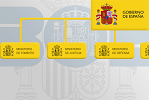Closing a company
Content
Closing a company
When the life cycle of a company comes to an end, the following options are possible:
- Cease of activity: meaning the temporary suspension of business. With a cease of activity, the business owner decides to temporarily suspend business, which does not mean that the company ceases to exist.
- Termination: this means the end of all type of activity and the winding-up of the company. With termination, the legal entity disappears.
An individual entrepreneur or self-employed person is a natural person who, personally, directly, on their own account and outside of the scope of the management and organisation of another person, habitually carries out an economic or a professional activity in return for a profit, with or without hiring employees.
Whether for an individual entrepreneur or a self-employed person, as well as for a trader with limited liability (a variant that limits taking risks), cessation and termination are the same; in other words, when a company ceases to exist, all types of business activity definitively end.
Cease of activity
When operations are ceased in commercial companies, jointly-owned companies and non-stock corporations, even though the company remains inactive, it maintains its legal personality and must continue to comply with certain obligations, including the following:
- No invoices can be issued for the supply of goods or provision of services pertaining to the business activity.
- Accounts must continue to be kept according to the Commercial Code and General Accounting Plan.
- The company has to continue certifying its books and filing is annual accounts with the commercial register.
- The obligation to file a corporate income tax return remains.
- All periodic declarations must still be filed for any withholding obligations that the company continues to have.
- It is mandatory to file the VAT statement for any invoices related to the period of the financial year in which the company was still active (for example, the annual summaries or the last quarter of the financial year will have to be filed in order to apply for a refund of the input VAT).
Any annual reporting declarations to which the company is subject must be filed, and the Enabled Email Address where pending notifications will be received must continue to be accessed (this applies to: sociedades anónimas, sociedades limitadas and large companies).
Procedures for the cease of activity
Ceasing a business activity involves completing several procedures, depending on whether this relates to a company or a self-employed person.
Procedures for the cease of activity for companies
- Termination of employment contracts

- Dismissal of hired employees

- Cancellation of the contributions account

- Notification of closure of the workplace

- De-registration from the Census of Employers and Professionals

- De-registration from the tax on economic activities

- Notification of cease/termination with other official bodies and/or registers

Procedures for the cease of activity for self-employed persons
- Termination of employment contracts

- Dismissal of hired employees

- Cancellation of the contributions account

- Notification of closure of the workplace

- De-registration from the Census of Employers and Professionals

- De-registration from the special scheme for self-employed persons

- Notification of cease/termination with other official bodies and/or registers

Processing of cessation of activity online (CIRCE system)
You can carry out the necessary formalities regarding the cessation of certain commercial enterprises in Spain via the CIRCE IT system, using the Single Electronic Document (DUE) – for self-employed persons, limited liability companies (SRL, Sociedades de Responsabilidad Limitada), successive formation limited companies (SLFS, Sociedades Limitadas de Formación Sucesiva) and limited companies for new businesses (SLNE, Sociedades Limitadas Nueva Empresa). The DUE covers all the procedures required by the bodies and administrations involved in the process of cessation of business activities.
Termination of a company
The termination of a company is the process whereby a business owner performs the necessary procedures to close a company.
The termination process involves certain acts provided for in the legislation, which are mandatory. This generally includes the following steps:
-
Winding-up of the company.
Winding-up, typically agreed on at the General Shareholders’ Meeting, is necessary in order to be able to initiate the process of liquidating a company. It does not mean that a company legally disappears, but it does halt the ordinary activity of a company and leads to the liquidation period.
Causes for winding up a company are established in the articles of association and in the legislation in force. -
Liquidation
The winding-up of a company initiates the liquidation period. The purpose of liquidation is to distribute the assets between the shareholders after all outstanding credits have been recovered and all corporate debts have been paid.
During this stage, the company maintains its legal personality, but its ordinary activity is stopped. -
Termination
Once the liquidation process has concluded (or liquidation is performed), the termination of the company must be recorded in the commercial register by means of a notarial act.
Procedures for terminating a company
Just like the cease of business activity, the termination of a company means that certain administrative procedures have to be conducted, and termination has to be recorded in the register.
- Decision to wind up a company

- Appointment of liquidators

- Registration of the appointment of liquidators

- Settlement of property transfer tax and duty on documented legal acts

- Registration of the winding-up decision

- Process of liquidation, distribution of corporate assets and notarially recorded instrument of termination

- Settlement of property transfer tax (ITP) and duty on documented legal acts (AJD)

- Application for registration of termination of the company and the cancellation of entries in the register

Legal and/or technical references
-
Royal Decree 867/2015 of 2 October regulating the specifications and conditions for use of the Single Electronic Document for the cease of activity and the termination of limited liability companies and for the cease of activity of individual companies

-
Royal Legislative Decree 1/2010 of 2 July 2010 approving the revised text of the Law on Stock Corporations











